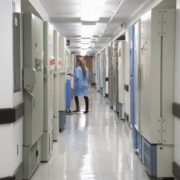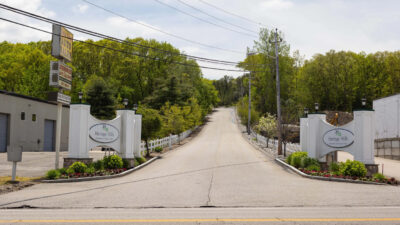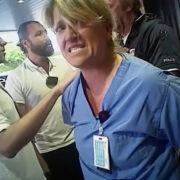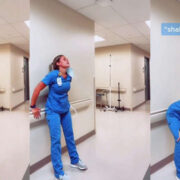Michael Woodcock of the U.K. was enjoying Christmas with his family when he started experiencing severe stomach pains. When he called for help, the health professionals told him to go to the A&E department at Scarborough Hospital. He said he was triaged “fairly quickly” when he arrived, but he had to wait eight hours to see the doctor. The hospital didn’t have enough beds to give him a place to rest while he waited, so he ended up sleeping in his car in the parking lot.
The York and Scarborough Teaching Hospitals NHS Foundation Trust said the hospital was experiencing “the worst pressures on emergency services in our history.”
Woodcock said the hospital was so overwhelmed, the only alternative was to sleep in a chair in a crowded waiting room, so his car seemed like the best option. He said he didn’t blame the clinicians for the situation and that the nurses on staff even gave him blankets to make him more comfortable.
He ended up receiving the proper medical care and was given a private room after seeing the doctor. The scan results indicated appendicitis, and the doctors told Woodcock he had to stay overnight in case his appendix burst.
“The hospital was really busy. There were beds on the sides of corridors and lots of frustrated people in the waiting room,” Woodcock explained. “There were no beds. I ended up getting some blankets and sleeping in the car for a few hours before heading back to the hospital in the morning for the operation.”
The NHS Foundation Trust apologized for the inconvenience in a public statement. “Like hospitals across the country, our emergency departments are under severe strain and in the last couple of days we have experienced the worst pressures on emergency services in our history,” it wrote.
“Increased staff absence and high numbers of patients waiting to be discharged who no longer need to be in hospital have had an impact on our emergency departments, resulting in patients waiting much longer for beds to become available.”
“We recognize this means many patients will spend a long time in the emergency department before they are admitted to a ward, and we are sorry for this. Our staff are working exceptionally hard in the most difficult of circumstances,” it continued.
Ashley Green, chief executive of Healthwatch North Yorkshire, a watchdog for NHS accountability, called the situation “very concerning.”
“No patient should have to go through what Michael has,” Green said. “Such a personal experience reiterates the pressures that the NHS and hospitals across North Yorkshire are facing this winter, which are further exacerbated by new cases of Covid-19 and flu, alongside backlogs in treatment, set against the continuing workforce crisis in health and social care.”
“We continue to highlight the urgent need for increased staffing, funding and resources across the NHS,” he added.
Many healthcare facilities are facing critical shortages this winter. Recent statistics show Woodcock’s experience isn’t unique. One in three patients at the A&E department waits more than four hours to be seen and one in three ambulances waits over 30 minutes to hand patients over to staff.
“Trolley waits,” which is when a patient stays in a gurney until a bed becomes available, are also becoming more common. Around four in ten patients wait four hours or more for a bed.
















